The 5 Best Chinese Ink Brands: Properties, Selection Criteria & Care Guide
Previously, I shared articles about China’s top 10 brush brands and top 10 Xuan paper brands. After reading them, some calligraphy enthusiasts asked me to introduce ink brands and explain how to select and care for liquid ink. For those who appreciate Chinese calligraphy and painting, questions about which brands of ink are best often arise. To help everyone choose suitable ink and understand basic selection and maintenance knowledge, I have compiled information on The 5 Best Chinese Ink Brands and other related topics. I hope this guide helps calligraphy enthusiasts and anyone with questions about Chinese ink.
The 5 Best Chinese Ink Brands
China’s traditional ink brands include:
- Beijing Yi De Ge ink (inventor of Chinese liquid ink)
- Shanghai Cao Su Gong Hui ink
- Li Tinggui Hui ink
- Hu Kaiwen Hui ink
- Jixi Liangcai Hui ink
About Ink Sticks and Liquid Ink
In ancient times, people primarily used ink sticks (also called Chinese ink), which needed to be ground on an inkstone.
You can refer to this article:
Beginner’s Guide to Make Calligraphy Ink with an Ink Stick & Stone
To create ink, one would place a few drops of water on the inkstone and move the ink stick in circles or back and forth to produce liquid ink. The manufacturing process typically involved smoke refinement, material mixing, production, drying, and gold decoration. Ink sticks have long been treasured by scholars, calligraphers, and painters as collectible items. Legend has it that Cao Cao from the Three Kingdoms period and Song Dynasty’s Sima Guang both loved collecting ink sticks.
When we talk about ink in the “Four Treasures of the Study” (brush, ink, paper, and inkstone), we’re usually referring to liquid ink nowadays. When discussing the history of liquid ink, we must mention Yi De Ge ink.
Yi De Ge’s founder, Xie Songdai, was from Hunan province. At age 12, he followed his father to Beijing and later entered the Imperial Academy. While serving there, he absorbed knowledge from the library collections. Becoming interested in his classmates’ technique of making ink from coal lamp smoke, he compiled “Notes on Southern Ink Making,” systematizing ink production techniques. He later wrote “Verses on Ink,” proposing that “from block to inkstone, from inkstone to box, from box to liquid—ancient to modern transitions follow a natural progression.” Through “repeated trials, errors, and realizations,” he mastered liquid ink production techniques, creating ink comparable to traditional ink sticks. This liquid ink was immediately welcomed by scholars and artists.
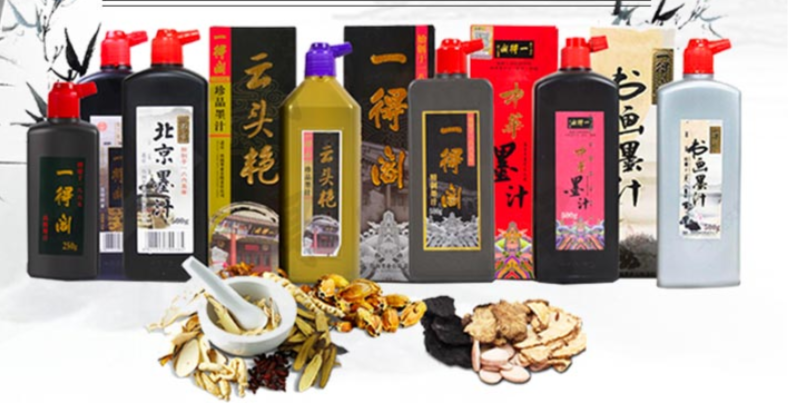
In 1865 (Tongzhi Emperor‘s fourth year), Xie Songdai opened the first shop producing and selling liquid ink at No. 44 Liulichang in Beijing. He named it “Yi De Ge” (taken from the couplet “One skill serves the world’s needs; mastery comes from ancient writings”). Xie personally wrote the shop sign that hung at the entrance.
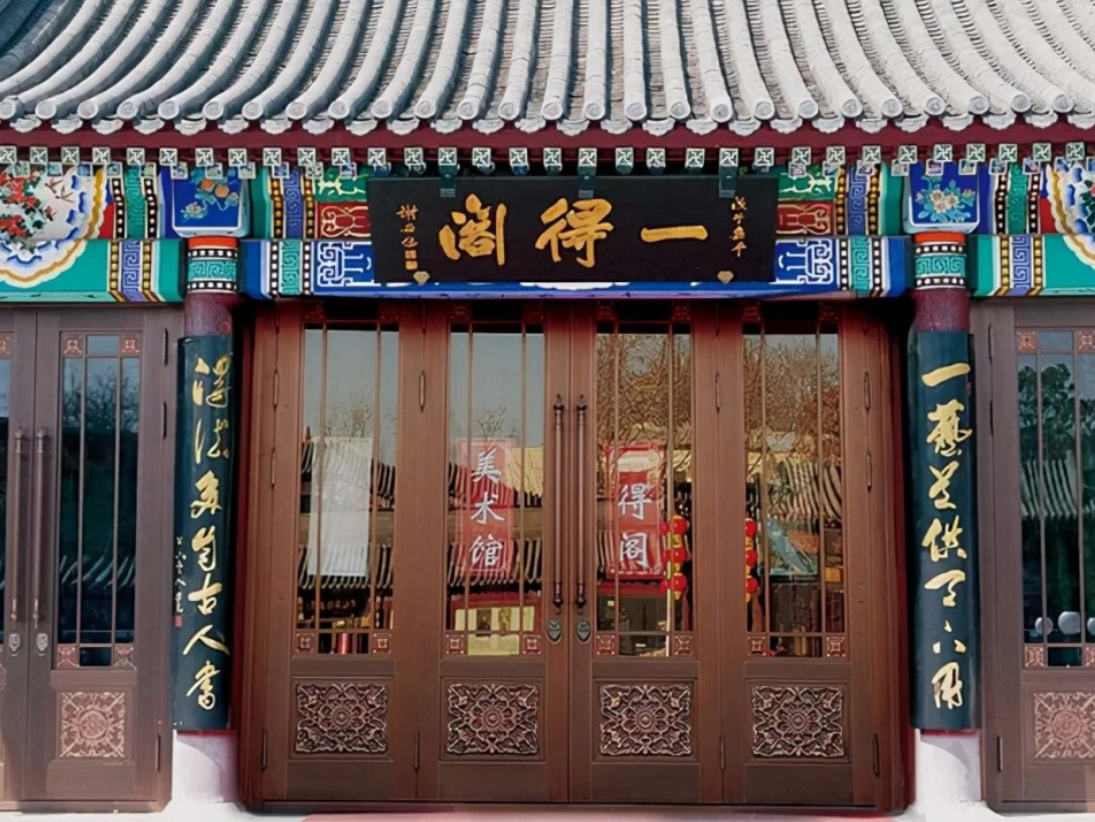
This is the origin of “Yi De Ge” ink. Among the 5 best Chinese ink brands, Yidege is the most famous and has the largest market share.Having no son, after his death, the shop passed to his apprentice Xu Jiebin from Shen County, Hebei Province. Being clever and business-savvy, Xu expanded production by establishing an ink factory (currently located at 25 Xinhua Street, Nanlu, Xuanwu District, Beijing). He continued using traditional manual methods to produce ink and opened branches in Tianjin and Zhengzhou, with joint specialty stores in Shanghai and Xi’an. The ink produced fell into two main categories: lampblack and pine soot.
Lampblack varieties (made from burning oil materials, mainly tung oil seeds or lard) included: Cloud Top Red ink, Orchid Smoke ink, Glossy ink, Tung Smoke ink, Single and Double Child ink, and Lampblack ink.
Pine soot varieties (made from burning pine oil) included: Donkey-hide Gelatin Pine Smoke, Five Old Pine Smoke, and Small Pine Smoke.
Lampblack ink has a certain luster with warm tones, rich gradations, and shine. It can be used thick or thin, making it excellent for line drawing and shading—a favorite among artists. Pine soot ink is jet black without shine, slightly cool-toned. Ancient people often used it for rendering hair and eyebrows, making it excellent for small-character calligraphy and meticulous painting. Its formula proportions are adjusted according to seasonal climate changes.
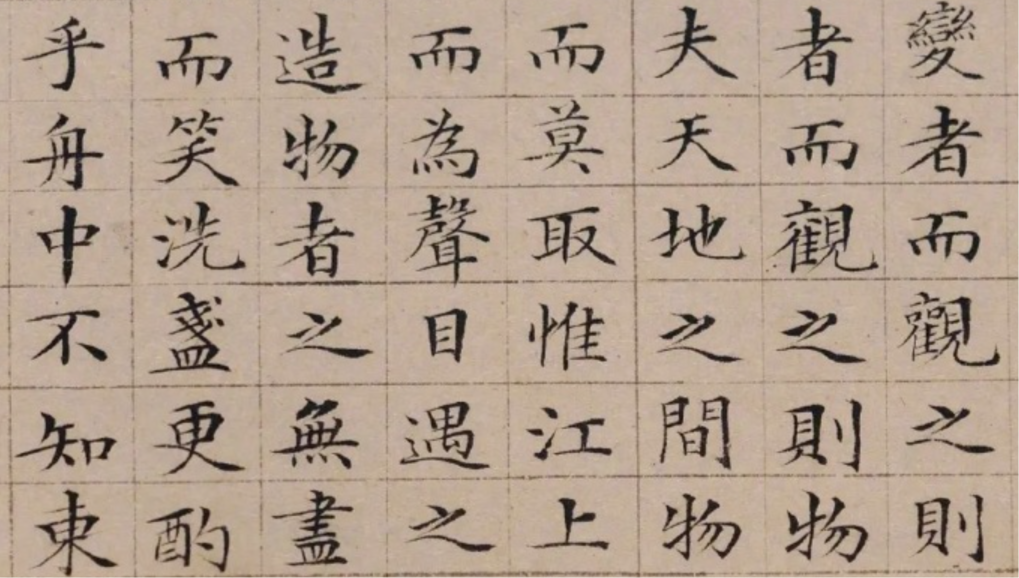
Small-character calligraphy or detailed gongbi painting works best with pine soot ink
The famous calligrapher Qi Gong once wrote in praise of Yi De Ge ink:
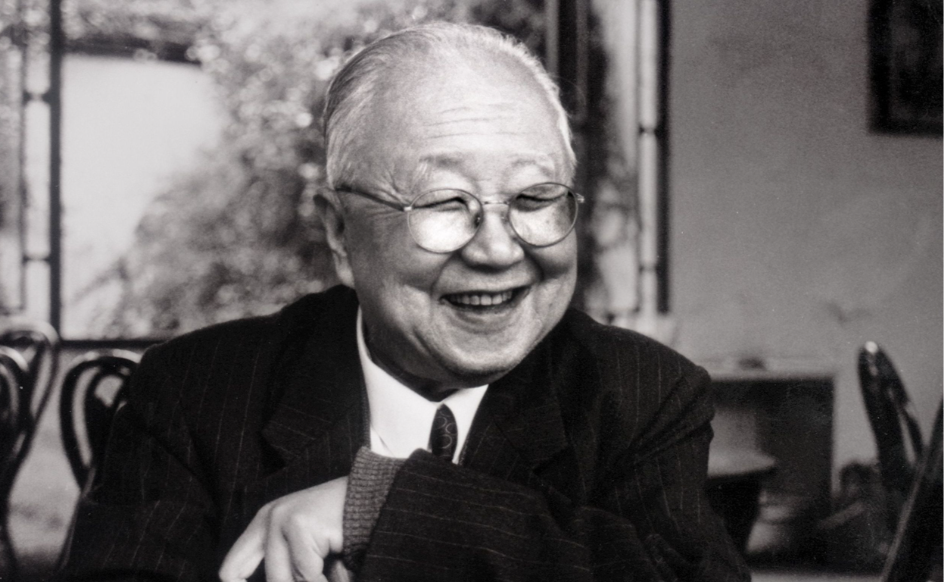
“The inkstone pool rotates countless times, throughout the day much is spent in the bowl. Liquid ink created from Yi De Ge, the literary world praises this pioneer.”
Perhaps it was because Mr. Qi Gong lived in Beijing that using Yidege ink was a natural choice for him. This also makes Yidege the only one of the 5 best Chinese ink brands to have a poem written in its praise by Mr. Qi Gong.Of course, Yidege’s strength should not be underestimated.
Using and Maintaining Liquid Ink
- While liquid ink is convenient, its concentration is fixed (pre-adjusted by manufacturers). When writing, if the ink is too thick, the brush won’t move smoothly and may split; if too thin, the ink will bleed into the paper. Either way, inappropriate concentration affects writing. Therefore, add water if the ink is too thick or use an ink stick to thicken it if too thin, ensuring suitable concentration for good writing. Many calligraphy masters take out some ink and add water according to their desired style. However, never pour this diluted ink back into the bottle as it will cause the bottle’s contents to spoil. Many people have experienced leaving ink for a few days only to find it smelly when used again, especially in hot summer when diluted ink spoils more easily.
- After completing a work, let it dry for 24 hours to fix the ink and prevent bleeding during mounting.
- Winter freezing is a characteristic of traditional liquid ink, so store it in rooms above 10°C (50°F). If frozen, soak the bottle in warm water to thaw it, and the quality will remain unchanged.
- Never get ink on clothing as it’s extremely difficult to clean thoroughly.
Finally, a reminder—different calligraphy styles require different ink concentrations: kaishu (regular script) generally uses thicker ink, while xingshu and caoshu (running and cursive scripts) require thinner ink. Some calligraphers are very particular about ink usage to achieve certain artistic effects. So when beginning to learn calligraphy and practice brush writing, understanding ink usage is essential. Whether using ink sticks or liquid ink, mastering their principles through continuous practice will help improve your writing more quickly.
User Reviews of Common Ink Brands
After learning about the 5 best ink brands, let’s take a look at what some users had to say. The following summary comes from anonymous online users who tested on Wang Liuji pure skin Xuan paper. The star ratings after each ink name indicate recommendation level—more stars mean better quality and value.
1. Yi De Ge Ink (★★★★)
A century-old brand produced by Beijing Yi De Ge Ink Industry Co., Ltd. Affordable with excellent value. Their signature product is Cloud Top Red ink, characterized by glossy ink traces, strong performance in diluted form, rich layering, five gradations of thickness, and smooth writing. The drawback is its high gelatin content and traditional bone glue craftsmanship (if the glue-to-water ratio is imbalanced, it can cause bottle expansion and odor). It solidifies below freezing (0°C/32°F). Suitable for practice and general works—a top choice for calligraphy enthusiasts.
Brand: Cloud Top Red Analysis: While not showing the purple-jade luster as advertised, it offers good blackness with excellent thick and wet ink effects. Good performance when diluted with clear layering. At brush stroke overlaps, the order of strokes remains clearly visible, displaying all five ink qualities: scorched, thick, wet, light, and faint. Drawbacks: High gelatin content, optimal water ratio 1:2 (1 part water to 2 parts ink) for best writing; bone glue components solidify into gel below 0°C/32°F; overnight ink generally cannot be preserved.
2. Red Star Ink (★★)
Produced by Anhui Red Star Ink. Two representative products: Red Star Ink and Xuanzong Ink (domestic). The main difference between domestic Xuanzong Ink and Red Star Ink is blackness—Xuanzong’s is superior, though diluted ink layering and performance are poor, with brush cross-sections appearing paste-like. Uses traditional bone glue techniques. Considering ink quality versus price, it doesn’t live up to its reputation, with both being somewhat overpriced. Suitable for practice and general works.
Brand: Red Star Ink, Red Star Xuanzong Analysis: Good blackness, but average performance in diluted ink layering. Red Star’s Xuanzong differs significantly from the Japanese-produced version. Drawbacks: Focuses solely on blackness without attention to ink layering.
3. Lion Ink (★★★)
A Taiwanese brand, reportedly manufactured by Japan’s Kuretake OEM factory. Moderately priced. Their signature product is Lion Calligraphy Ink, featuring strong blackness, powerful layering, five gradations of thickness, and smooth writing. Uses synthetic resin adhesive (solidifies at -20°C/-4°F), suitable for year-round calligraphy and painting, good for both writing and mounting. Appropriate for practice, general works, and valuable pieces—a preferred choice for both enthusiasts and professionals.
Brand: Lion Calligraphy Ink Analysis: Powerfully black with all five ink qualities (scorched, thick, wet, light, and faint)—a truly excellent ink. Drawbacks: Small bottle capacity and slightly high price.
4. Cao Su Gong Ink (★★★☆)
A domestic established brand with affordable prices. Their representative product is ink blocks.
5. Qi Dasen Ink (★)
Produced by Beijing Dasen Fine Arts. An economy product with many flaws, the biggest being lack of layering in diluted form and paper activation (uncontrolled ink diffusion on Xuan paper, causing unclear strokes and damaged effects). Not suitable for traditional handmade mounting. Only appropriate for calligraphy practice.
Brand: Qi Dasen Special Ultra-concentrated Fine Ink Analysis: Has the standard blackness of ordinary ink. Drawbacks: A budget product not worth further evaluation.
6. Jiujiu Ink (☆)
Produced by Shandong Jiujiu. An economy product lacking layering when diluted, activating paper, and containing industrial dyes. Not suitable for traditional handmade mounting. Only appropriate for calligraphy practice.
Brand: Jiujiu Ink Analysis: Has the standard blackness of ordinary ink. Drawbacks: Blue coloration incompatible with traditional Chinese mounting techniques, serious bleeding, and industrial pigments added for color enhancement.
7. Xuanzong (Xuanming) Ink (★★★★★)
Produced by Japan’s Bokuundo Co., Ltd. Somewhat expensive. Three common products in the market: Xuanzong (Xuanming) Ultra-concentrated Ink, Xuanzong (Xuanming) Medium-concentrated Ink, and Xuanzong (Xuanming) Ink. Currently the best liquid ink available in the domestic market. Features strong blackness, five ink gradations, powerful layering, and smooth writing. Uses synthetic resin adhesive, suitable for year-round calligraphy and painting, good for both writing and mounting. Appropriate for general and valuable works—the top choice for professionals.
Brand: Xuanzong/Xuanming Ink Analysis: This is truly excellent ink. The scorched ink effect shows powerful, vigorous blackness. The fine brush thick ink effect is superb. All five qualities—scorched, thick, wet, light, and faint—are fully present. A premium ink! Drawbacks: Slightly expensive.
8. Kaimei Ink (★★★★)
Produced by Japan’s Kaimei Corporation. Two representative products: Kaimei Ultra-concentrated Ink and Flower Fairy (which comes in three varieties: blue-black, brown, and lampblack), all somewhat expensive (partly due to its reputation as Li Keran’s preferred ink for painting oxen). Kaimei Ultra-concentrated Ink is moderately priced. Both inks feature strong layering, five gradations of thickness, and smooth writing. Use synthetic resin adhesive, suitable for year-round calligraphy and painting, good for both writing and mounting. Appropriate for general and valuable works.
Brand: Kaimei Ink Paper: Wang Liuji pure skin Analysis: Excellent ink color with all five qualities—scorched, thick, wet, light, and faint. A great ink! Drawbacks: Slightly expensive.
Master Li Shengfan’s Ink Appraisal
Appraisal time: September 2012 (noting the prices and quality of manufacturer production batches at that time)
Appraisal method: Before testing each ink type, a large Baiyun brush (primarily sheep hair) was selected. The brush was thoroughly cleaned, forcefully shaken three times to remove water, then placed on absorbent tissue for 3 seconds to ensure even ink coverage. Strokes were written at consistent speed. Writing paper was a certain brand of refined boiled Xuan paper.
Selected brands: Yi De Ge, Xuanhe, Red Star, Xuanzong, and Cangpei Room. (Not comprehensive but representing common market brands.)
Overall subjective impressions:
- Yi De Ge, with its long history, has relatively mature ink production techniques, resulting in generally better effects and more varieties. The drawback is heavy gelatin content—better Yi De Ge inks typically need dilution before use. Some product varieties offer poor value for money.
- Xuanhe ink, as recommended by the Chinese Calligraphers Association Training Center, has certain advantages. However, regarding Xuanhe Overnight ink, while very black, it shows color transfer when rubbed after drying—a fatal flaw.
- Japanese inks or those using Japanese technology generally appear grayish when writing, not particularly black. Japanese-technology inks often lack vigor, such as Yi De Ge Chinese Ink, Red Star Ink, and Xuanzong Ink. However, their advantage is that they generally provide tung oil smoke ink effects.
- Lower-priced inks share a common issue: after drying, rubbing the ink leaves a grainy feeling, possibly related to the quality of carbon black raw materials used. This is just a feeling without scientific measurement, so it can’t be confirmed, but generally, you get what you pay for.
- Examining paper backs shows some inks contain more water, resulting in heavier ink bleeding. Yi De Ge Calligraphy Ink has the highest water content. Others with high water content include Authentic Yi De Ge ordinary ink, Yi De Ge premium ink, Yi De Ge Cloud Top Red, Xuanhe ink, and Red Star Ink. Those with less water include Yi De Ge Chinese ink and Cangpei Room ink. Xuanzong ink has the lowest water content.
- This overview can help select options with high value based on unit price comparisons (comparing prices for equal volumes). Since ink is consumable, value is a critical purchasing indicator, though suitable ink selection for your needs is also important. Don’t let value alone determine artistic effect pursuits—it’s just one reference point.
- Personally, considering both effect and value, Yi De Ge Calligraphy Ink, Yi De Ge Cloud Top Red, and Xuanhe Special Overnight Ink are all good choices, but only at the current stage. Chinese-made products are known for inconsistent quality, with manufacturers’ ink quality varying over time. Taking authentic Yi De Ge ordinary ink as an example, the old packaging version has better quality than the new packaging version.
Note: Due to camera color differences and subtle color variations in the photographed objects, the captured images may differ slightly from actual effects. Additionally, the upper part of the image shows some color deviation, possibly due to insufficient lighting during photography under a desk lamp. Each brief review is based on subjective impressions of actual effects but serves as an important reference.
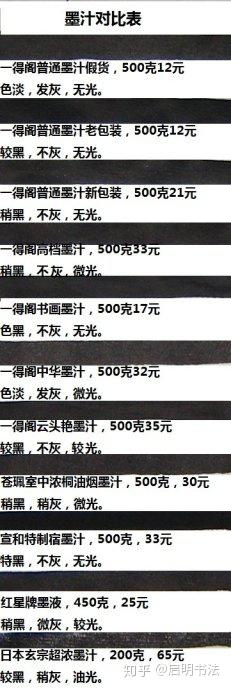
If you found this article helpful, please share it with more friends who love Chinese calligraphy!

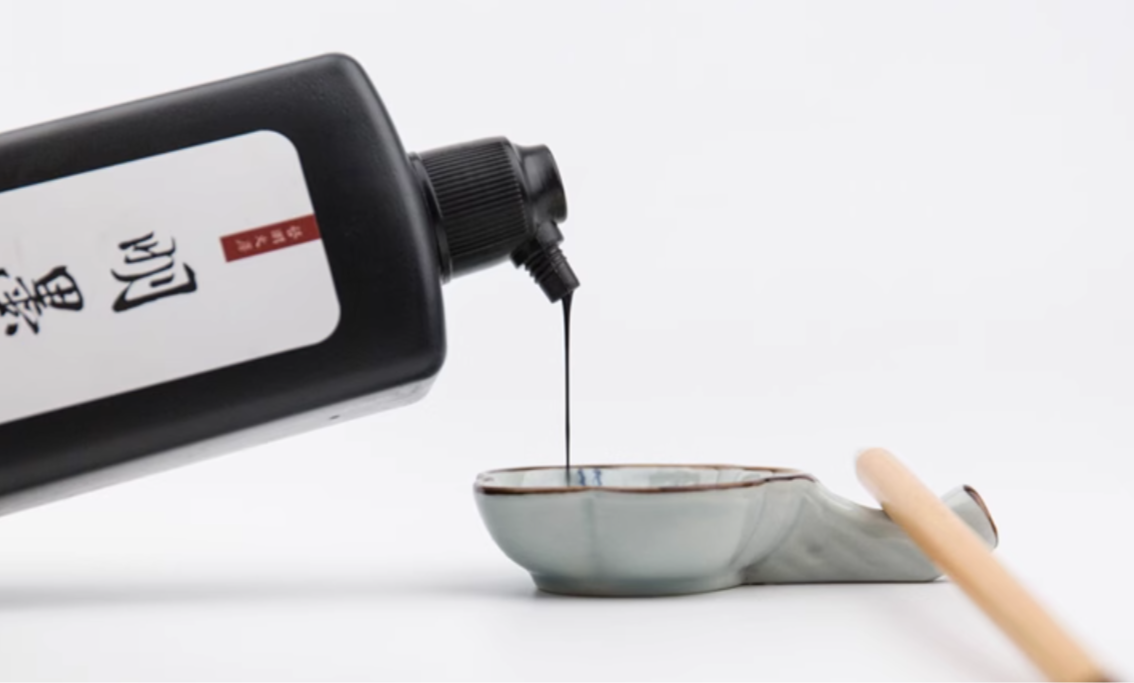
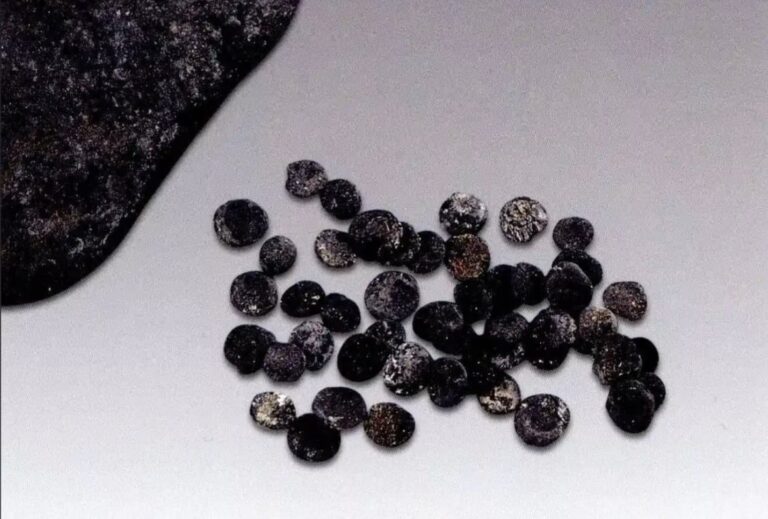
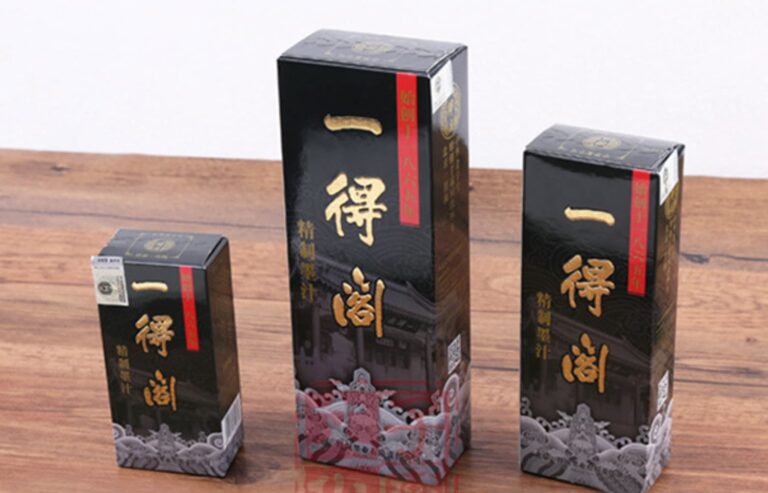

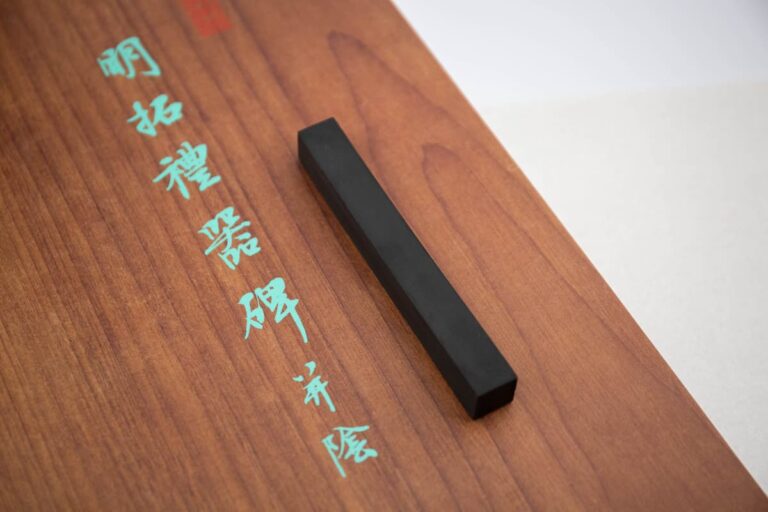
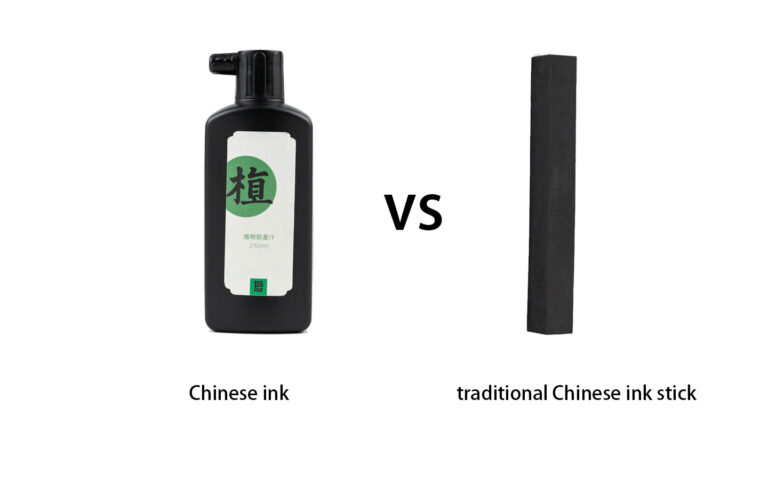
Hello there! I know this is somewhat off topic but I was wondering which blog platform are you using for this website? I’m getting fed up of WordPress because I’ve had problems with hackers and I’m looking at alternatives for another platform. I would be great if you could point me in the direction of a good platform.
I’m sorry to tell you that I use wordpress!
You really make it seem really easy together with your presentation but I in finding this matter to be actually something that I think I might by no means understand. It kind of feels too complex and extremely vast for me. I’m looking ahead to your next put up, I’ll attempt to get the grasp of it!
There’s nothing difficult in the world, only those who are determined can succeed.
I wish to show my affection for your kindness giving support to visitors who should have help on this important topic. Your very own commitment to getting the message along had become amazingly valuable and have constantly made most people just like me to arrive at their objectives. Your amazing insightful advice denotes this much a person like me and still more to my office colleagues. With thanks; from everyone of us.
I should be the one thanking you for visiting and writing such a long comment. This will inspire my creative passion.
Wonderful blog! I found it while surfing around on Yahoo News. Do you have any tips on how to get listed in Yahoo News? I’ve been trying for a while but I never seem to get there! Many thanks
Thank you for following my blog. I don’t know how it got indexed by Yahoo either – I’m just putting my heart into writing articles.
I like the valuable info you provide in your articles. I will bookmark your weblog and check again here frequently. I’m quite certain I will learn plenty of new stuff right here! Good luck for the next!
Thank you, and please feel free to share my website with other friends who are interested in Chinese calligraphy.
It’s hard to search out educated folks on this matter, but you sound like you understand what you’re talking about! Thanks
Thank you. So are you also a Chinese calligraphy enthusiast?
You’ve made even the simplest ideas feel profound with the care and depth you bring to your writing.
thank you